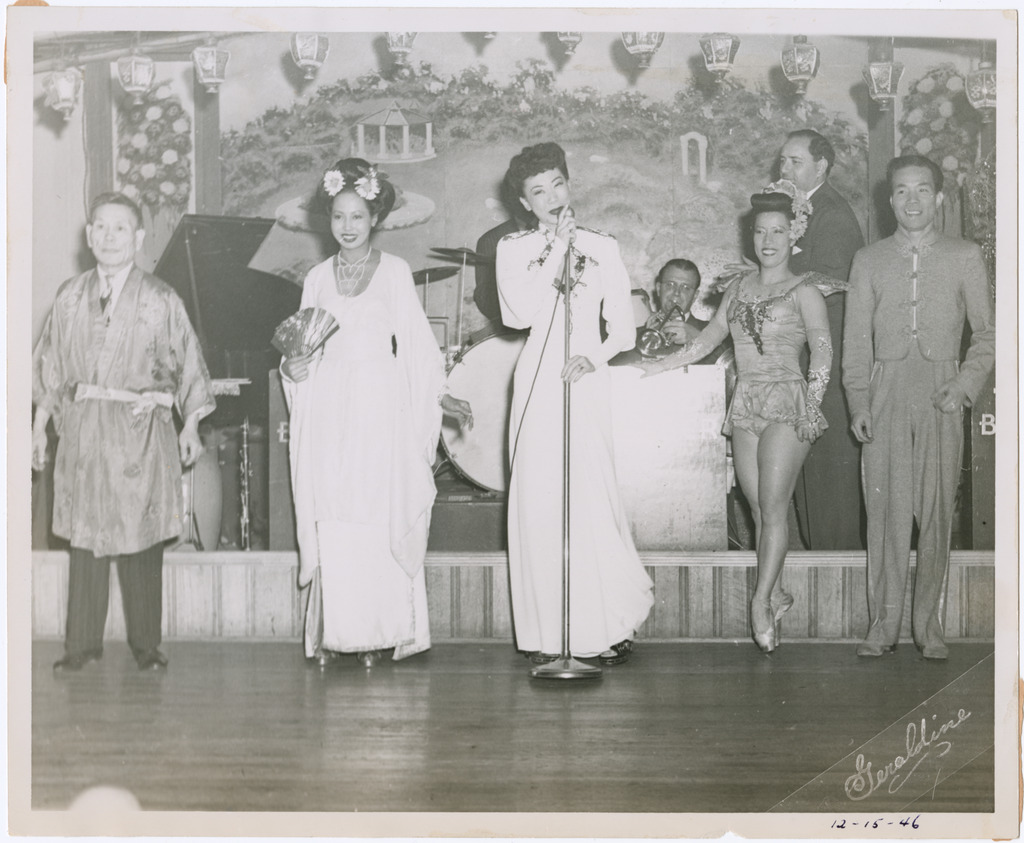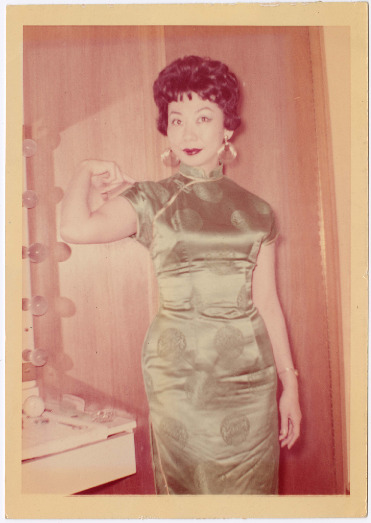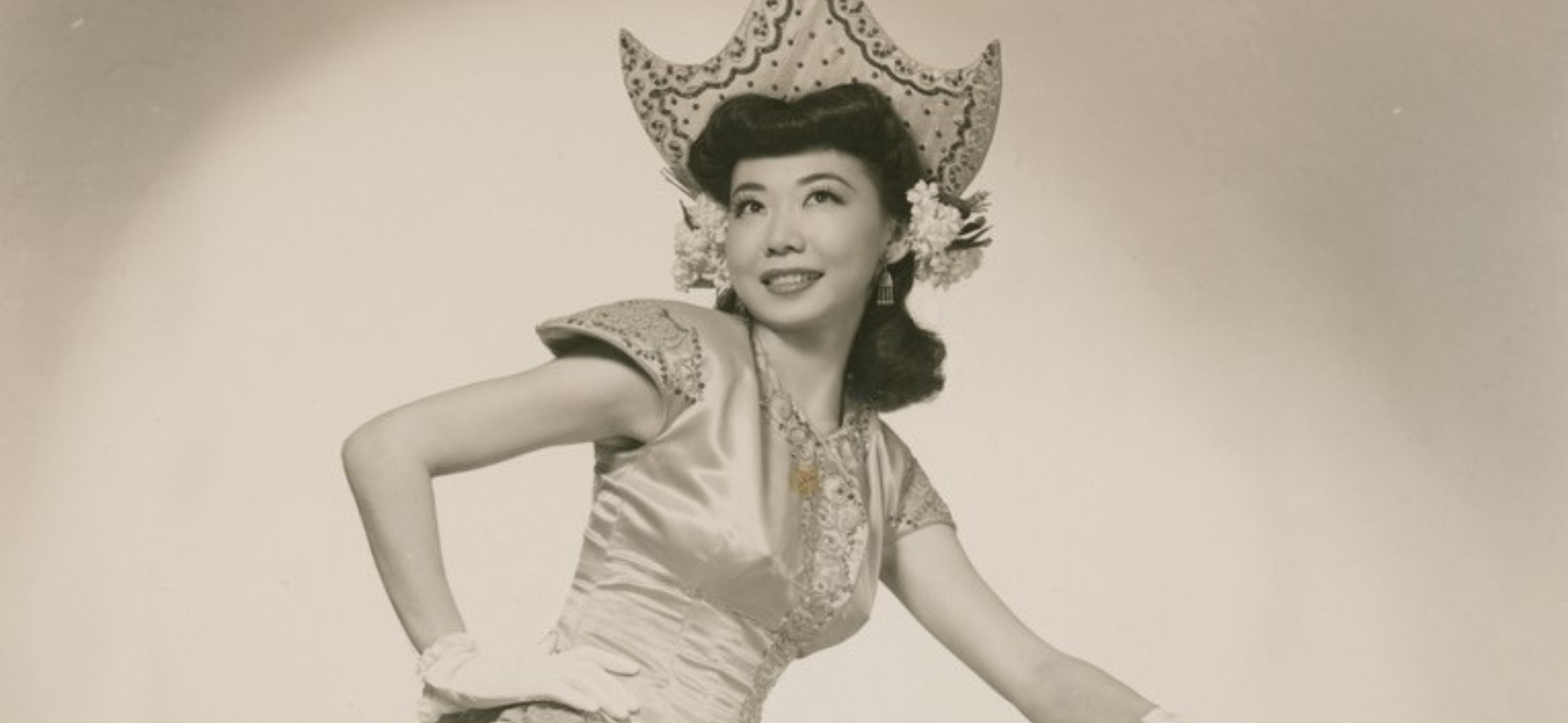May 31, 2024
Actress and performer Mary Mon Toy is best known for her breakout role as Minnie Ho in the original Broadway production of The World of Suzie Wong — which led to a thriving, decades-long acting career on the stage and screen. But for most of her public life, she kept her true identity as a Japanese American a closely guarded secret.
Mary Teruko Watanabe was born in Seattle on June 3, 1916, the oldest of two children to Mon Yusa and Yoshizo Watanabe. She met her future husband — a handsome, intellectual, and politically active young man named Shigesato Okada — while attending college, and they married on September 28, 1941. But the marriage would not survive the hardships of World War II.

In April 1942, Mary and Shigesato were among the first group of arrivals at the Puyallup Assembly Center. Mary’s health took a sharp turn after their arrival, and an emergency hospital visit in late May revealed that she was pregnant. But in August, doctors at the Puyallup health clinic discovered that Mary had lost the baby and in its place was a cyst “the size of a three-month pregnancy.” The Watanabe and Okada families were transferred to Minidoka shortly after, where Mary finally had to undergo an oophorectomy, or removal of her ovaries.
Compounding Mary’s health trials, in October 1942, her husband was accused of selling goods to Japan during a 1941 business trip to Mexico, and taken into custody by Federal Marshalls. He was eventually acquitted and “released” back to Minidoka, but the WRA and FBI’s accusations continued to cast a shadow over Shigesato — and Mary by association. Angry over his treatment by the government, he turned increasingly to drinking and gambling, Mary would later tell her friend and biographer Marnie Mueller. After receiving leave clearance in the fall of 1943, she moved to New York City to study voice at Julliard, leaving behind Minidoka and her marriage.

Told that as an Asian woman, and especially as a Japanese American, she would not be able to realize her dreams of becoming an opera singer, Mary instead became a showgirl. She was hired by the China Doll Club in Times Square and changed her name, borrowing the last name of tap dancer Dorothy Toy — who, unbeknownst to Mary, was actually Dorothy Takahashi, another Nisei performer pretending to be Chinese to insulate her career from wartime anti-Japanese hysteria.
After an eight-month stint at the China Doll Club, Mary toured with a vaudeville act and soon gained popularity as a solo performer, singing at clubs across the country and abroad. By 1954, she was back in Times Square, working at the famed Latin Quarter. It was there that she caught the eye of Truman Capote and several Broadway scouters for the musical adaptation of Capote’s novella House of Flowers.




But it was her next Broadway role, as Minnie Ho in The World of Suzie Wong, that catapulted Mary to wider fame and success. The play ran on Broadway for 508 shows before going on a cross-country tour, and helped Mary go on to land guest appearances and recurring roles in various TV shows and movies, though she continued to appear in traveling theater productions like South Pacific, Flower Drum Song, and The King and I. In 1973, she was cast in Santa Anita ‘42, one of the earliest plays about Japanese American WWII incarceration, though she never told anyone that she had lived through the events depicted in the play firsthand.



Mary’s decision to hide her Japanese American background would seem to be rooted in self-preservation rather than shame in her identity as an Asian American woman.

Throughout her career, she remained an advocate for other Asian American performers following in her footsteps, and was outspoken against discrimination in the arts and beyond, calling out productions with “Oriental themes” but no Asian actors, protesting yellow face casting, and even marching against Apartheid in 1986.
Mary’s nieces Lori Saginaw Watanabe and Wendy Watanabe describe her “paradoxical choice,” and what it ultimately cost her, in their foreword to Marnie Mueller’s biography of Mary Mon Toy, The Showgirl and the Writer:
“We now see the grit and resilience that Mary (Mon Toy Watanabe) needed in order to gain a foothold in an America embedded with prejudice against Asians, and with particular hostility toward Japanese Americans after the war’s end. In her heyday, roles for an ‘oriental’ actress, dancer or singer were rare, humiliating, or nonexistent….
“Mary was like others in persecuted groups who are given the paradoxical choice to ‘pass’ by masking their true identities, and who then bear an internal weight and cost for that decision for the rest of their lives. Our aunt’s story now stands in the light. Rest in peace and truth, Mary Mon Toy Watanabe.”

—
Based on Marnie Mueller’s Densho Encyclopedia article on Mary Mon Toy, and The Showgirl and the Writer: A Friendship Forged in the Aftermath of the Japanese American Incarceration, also by Mueller. See the Mary Mon Toy Theatrical Collection to further explore photos, playbills, and other materials from Mon Toy’s performance career.
Header image: Mary Mon Toy China Doll Club promotional photo. Courtesy of Marnie Mueller, Wendy Watanabe, and Lori Watanabe Saginaw, Densho.
